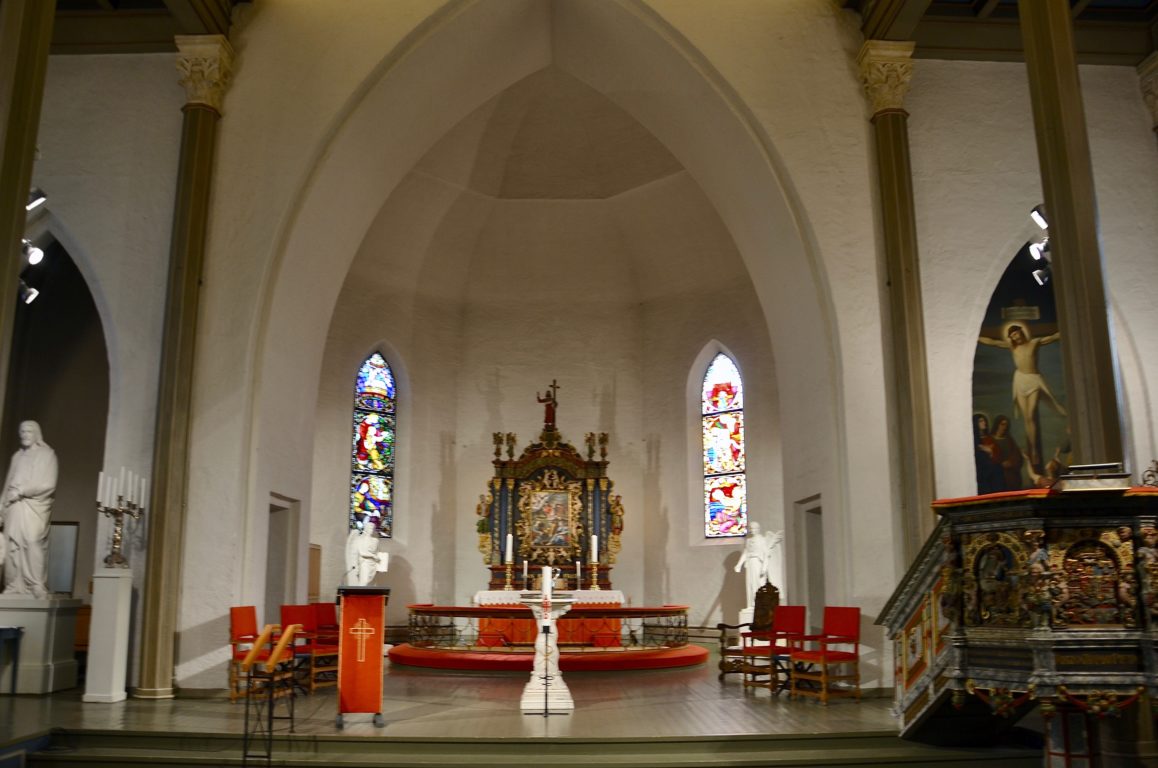Tønsberg Cathedral
Address
Phone
+47 333 74 700Opening hours:
Free organ matinee on Wednesdays at 12:00
Every Sunday from 12:30 to 14:00 (after the church service)
In July:
Thursdays from 11:00 to 13:00
Drinking water
Tønsberg Cathedral stands on a thousand-year-old church site in what is often referred to as Norway’s oldest town. The present church was completed in 1858. It was built over the foundations of Lavrans Church (Sancti Laurencii kirkie), which was constructed in the early 1100s. This church, recreated in a model located outside the cathedral, likely replaced an older stave church that may have stood there as early as the time of Olaf Haraldsson. In Heimskringla, Snorri tells that Tønsberg was an important royal residence for King Olaf. Tønsberg was a favorable place to stay during winter and spring. During one of these stays, the saga recounts how Olaf went to mass on Ascension Day, when Rørek Dagsson—whom Olaf had ordered to be blinded—attempted to stab Olaf to death during the service, but only struck his cloak. Saint Olaf did not receive his fatal wound until the Battle of Stiklestad about a decade later.
At the height of Tønsberg's prominence, the town was home to two monasteries and five churches. The great city fire of the Reformation year 1536 left most of the town in ruins. Only St. Mary’s Church and Lavrans Church remained. Lavrans Church was ordered to be demolished in 1809. St. Mary’s Church was later replaced by a new town hall in what is now Tønsberg Square in 1864. By then, the new Tønsberg Church had already been completed and was consecrated on December 19, 1858. Svend Foyn, who served as churchwarden, personally donated 25% of the construction costs for the new church. A monument to the whaling pioneer can be seen near the church.
The church was designed by Christian Heinrich Grosch (1801–1865) in Neo-Gothic style. In the early 1930s, Norway’s leading architect, Arnstein Arneberg (1882–1961), was commissioned to restore the church and recover some of its lost treasures. The church was reopened on November 19, 1939. The pulpit and altarpiece originally came from St. Mary’s Church. The baptismal font, the statues of Christ with the child, and the allegorical angels of “Law and Gospel” were provided by Svend Foyn. Per Vigeland created the stained-glass windows, and Arneberg brought everything together with a new vaulted ceiling, new pews, and beautifully crafted wrought ironwork. Else Poulsson was responsible for the altar cloth, the altar front, and the chasubles. The organ from 1924 has since been restored twice. The current facade and layout are the work of Ryde and Berg organ builders, completed in 2008. With its 60 stops, the organ is among the most frequently used concert organs in the country. The church became a cathedral with the establishment of the Diocese of Tunsberg in 1948. Today, the cathedral has three priests, two cantors, a deacon, a catechist, and a sexton.
